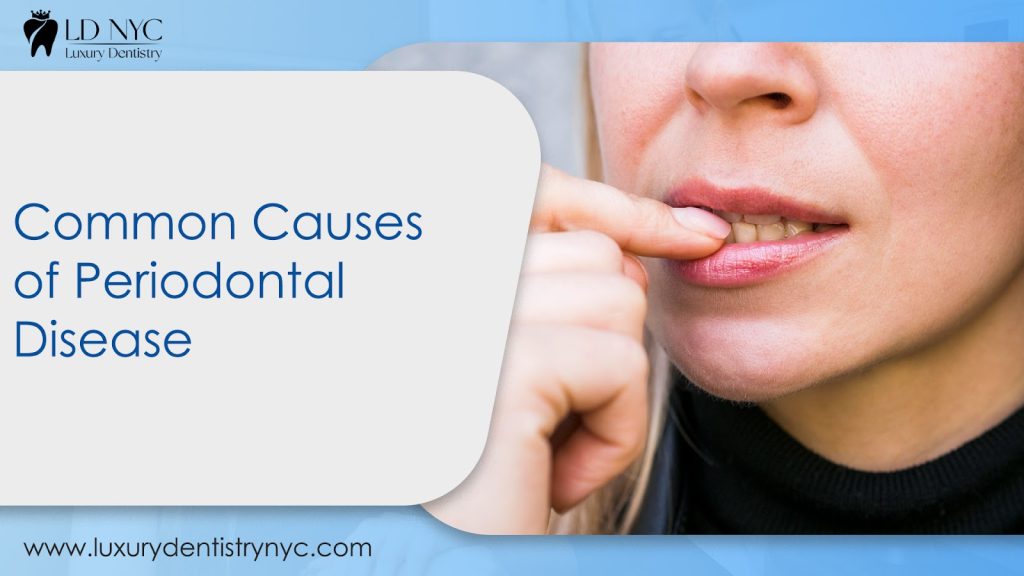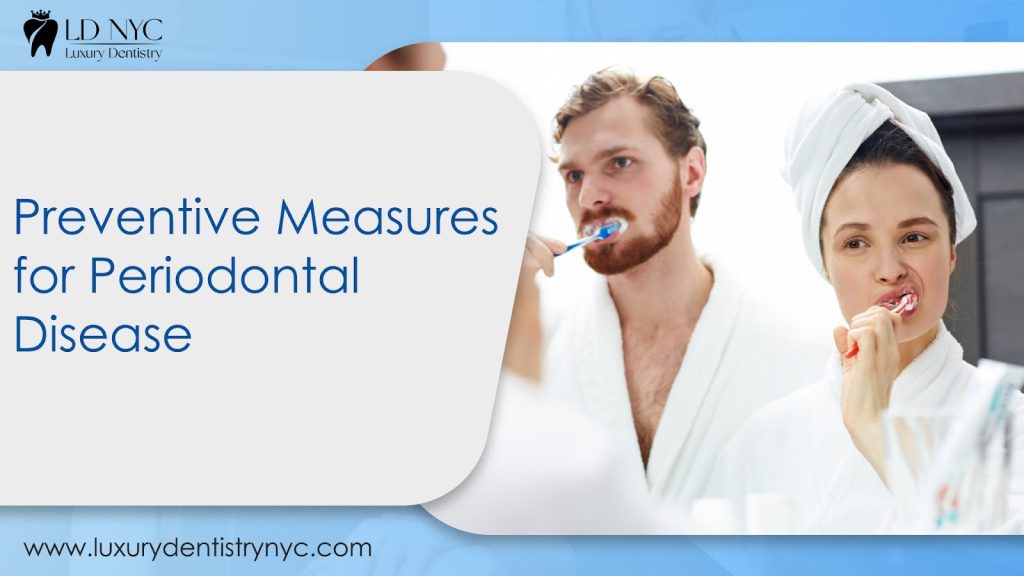Periodontal disease, commonly known as gum disease, is a prevalent oral health concern that affects millions of individuals worldwide. While it may start as mild gum inflammation, if left unchecked, it can progress into a serious condition that can lead to tooth loss and impact overall health. To combat this menace effectively, it is crucial to delve into the causes of periodontal disease. By understanding these factors, we can take proactive steps to prevent its onset or progression and ensure optimal oral health.

Table of Contents
ToggleCommon Causes of Periodontal Disease
Plaque Buildup
One of the primary culprits behind periodontal disease is the accumulation of dental plaque. Plaque is a sticky film of bacteria that forms on our teeth daily which, if not adequately removed through regular brushing and flossing, hardens into tartar. Tartar harbors harmful bacteria that irritate the gums and lead to inflammation; the hallmark of gum disease.
Bacterial Infections
Harmful bacteria play a pivotal role in the development of periodontal disease. These bacteria can penetrate the gum line, causing infection and inflammation. Over time, this inflammation can damage the tissues that support the teeth, leading to tooth mobility and eventual tooth loss.
Poor Oral Hygiene
Inadequate oral hygiene practices, such as infrequent brushing and neglecting flossing, create an ideal environment for plaque to thrive, which allows plaque to accumulate and contribute to the development of gum disease.
Tobacco Use
Smoking or using tobacco products is closely linked to an increased risk of periodontal disease. Tobacco use weakens the immune system and hinders the body’s ability to fight off infections, including those in the gums.
Genetic Predisposition
Genetics can also play a role in an individual’s susceptibility to periodontal disease. Some people may be genetically predisposed to have weaker gum tissues or a more robust inflammatory response to bacterial infections.
Medical Conditions
Certain systemic medical conditions, such as diabetes, can be associated with an elevated risk of periodontal disease. Poorly controlled diabetes can impair the body’s ability to combat infections, including those affecting the gums.

Less Common Causes and Contributing Factors of Periodontal Disease
Hormonal Changes
Fluctuations in hormones, such as those occurring during pregnancy or menopause, can influence periodontal health. Hormonal changes can make gums more susceptible to inflammation and bleeding.
Medications
Some medications may have side effects that impact gum health. For instance, certain antihypertensive drugs, anticonvulsants, and immunosuppressants can contribute to gum problems.
Dietary Habits
A diet high in sugar and poor in essential nutrients can fuel the development of periodontal disease. Sugar feeds harmful bacteria in the mouth, leading to increased plaque formation.
Stress
Stress can take a toll on oral health, leading to teeth grinding and clenching, known as bruxism. This can damage the teeth and gums, increasing the risk of gum disease.
Age
As we age, the risk of periodontal disease may increase. This is often due to a combination of factors, including cumulative exposure to risk factors and changes in oral health habits over time.

Preventive Measures for Periodontal Disease
Preventing periodontal disease requires proactive oral care and regular dental check-ups. Here are some key preventive measures:
- Maintain Excellent Oral Hygiene. Brush your teeth at least twice a day, floss daily, and use an antiseptic mouthwash to reduce bacterial load.
- Regular Dental Visits. Schedule routine dental check-ups to detect and address any signs of gum disease early.
- Healthy Lifestyle Choices. Avoid tobacco use, eat a balanced diet, manage stress, and maintain a healthy lifestyle to support optimal oral health.
- Monitor Medical Conditions. If you have a medical condition like diabetes, work closely with your healthcare provider to keep it under control.
Conclusion
Periodontal disease is a serious condition that can have far-reaching effects on oral and overall health. By comprehending its common causes and contributing factors, we can take the necessary steps to mitigate the risk of gum disease. Regular dental care, good oral hygiene practices, and a healthy lifestyle are the pillars of prevention. Don’t wait for the onset of symptoms; prioritize your oral health today to ensure a bright, gum-disease-free future. Remember, prevention is the key to maintaining a smile that lasts a lifetime. So make sure to seek treatment for periodontal disease if needed, and always prioritize your oral health and periodontal risk assessment during your regular dental check-ups.

Dr. Steven Davidowitz, also known as “Dr. D” by his patients, is one of the Upper East Side of NYC Manhattan’s leading cosmetic dentists that specialize in designing and maintaining beautiful smiles.











